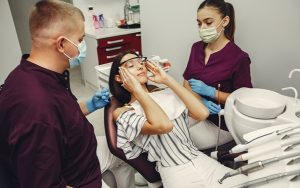
Therapy is provided in outpatient rehabilitation programs for patients’ therapeutic intervention despite their daily responsibilities. This treatment model enables individuals to work, attend school, and stay with family during recovery. People choose this option when they require professional help but cannot leave their current environment for extended periods. Outpatient treatment Orange County centres track outcome data across different patient groups and treatment approaches. Clinical research from the past twenty years identifies particular elements that consistently predict positive results across various conditions and patient populations.
Individual commitment levels
Personal dedication to change serves as the primary factor determining treatment outcomes. Therapy is better when patients attend regularly, complete their assignments, and actively participate than when they have intermittent involvement. Motivation increases during treatment, appearing fully developed at the start. Self-efficacy increases as patients accumulate successful experiences during recovery. Behavioural modification requires sustained effort, while cognitive pattern changes need constant reinforcement.
Receptiveness to clinical guidance combined with consistent application of learned techniques produces measurable improvements. Appropriate expectations about recovery time and acceptance of temporary setbacks help prevent early program departure. Most patients begin treatment with mixed feelings about change. Programs that emphasize early wins and build momentum typically see stronger commitment develop as participants notice concrete benefits from their efforts.
Relationship networks
Family dynamics and friendship ties have profound treatment participation and long-term results. These external influences either support therapeutic progress or create obstacles to recovery, depending on quality.
- Family education programs teach relatives effective support methods and improve household communication
- Recovery-oriented friendships provide accountability and encouragement beyond clinical appointments
- Coordinated healthcare teams to deliver consistent services without conflicting recommendations
- Workplace or school accommodations reduce stress that might disrupt treatment attendance
- Community resources, including stable housing, reliable transportation, and financial help, eliminate practical barriers
- Religious or cultural organizations offer additional support networks aligned with personal values
Family counselling that addresses problematic interaction patterns often improves home functioning while supporting individual goals. These changes benefit entire households rather than focusing solely on the patient.
On-going support systems
- Professional follow-up services, including continued therapy, support groups
- Peer recovery networks providing shared experiences and mutual accountability
- Family involvement in the maintenance phase through education and support training
- Community resource connections for long-term stability needs
- Crisis intervention protocols for high-risk periods
- Regular progress monitoring to identify early warning signs
Transition preparation includes comprehensive planning for maintaining gains after intensive treatment end, through this process, and obstacles to continued support beyond formal program involvement. The purpose of relapse prevention training is to teach patients to recognize early warning signs as well as strategies for difficult periods. These skills prove essential for maintaining progress in everyday environments without constant professional oversight.
Research shows that individuals who maintain professional connections achieve better long-term outcomes than those who receive services immediately after program completion. Graduated reduction of support intensity allows for sustainable transition to independent maintenance of recovery goals. The interaction between these factors creates complex dynamics influencing treatment success. Programs addressing multiple domains simultaneously tend to produce more durable outcomes than those focusing on isolated elements.







